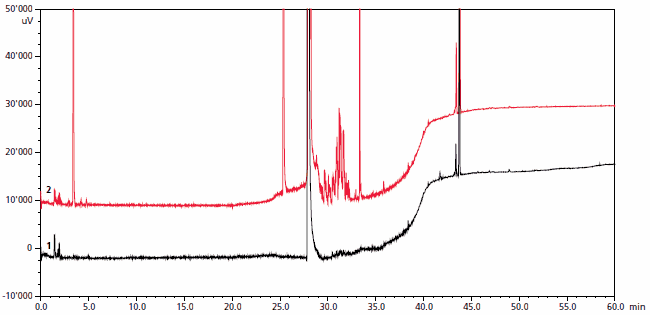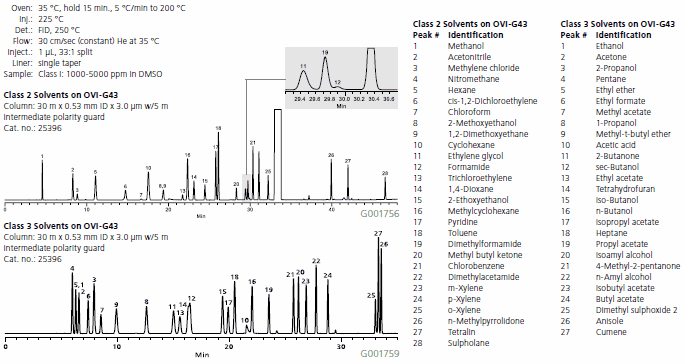Residual Analysis for Static Headspace GC Applications
Katherine K. Stenerson, Michael Jeitziner
AnalytiX Volume 9 Article 1
Solvents, Standards and GC columns meet the requirements of Ph.Eur., USP and ICH guidelines
Static headspace GC (GC-SH) is a technique used to concentrate volatile analytes prior to analysis. It can improve detection of low level volatile analytes and minimizes matrix interference by eliminating the need to inject the sample directly. An important application of GC-SH is for the determination of residual volatile organic impurities in active drug substances or excipients in drug formulations. Other consumer-oriented applications include the detection of residual solvents in foods, dietary supplements and packaging materials.
GC-SH is a relatively straightforward technique, and the methodology, as it applies to residual solvents in pharmaceuticals, is described and validated in specific monographs.1-3 These guidelines recommend both the types of solvents, and the acceptable levels of residual solvents in pharmaceuticals and formulations to help ensure consumer safety.
New Headspace Grade Solvents
When developing a GC-SH method, such parameters as sample solvent, extraction temperature, extraction time, sample volume, and headspace volume are optimized.4,5 Because the composition and purity of the sample solvent have significant effects on the recovery and quality of the chromatogram (Figure 1), we have developed solvents specifically for GC-HS applications. Their purity and handling specifications meet the requirements of European Pharmacopoeia (Ph.Eur.) and United States Pharmacopoeia (USP), as well as ICH guidelines. The new GC-SH line includes water and three of the most commonly used organic solvents; dimethyl sulphoxide (DMSO), N,N-dimethylformamide (DMF) and N,N-dimethylacetamide (DMAC). N,N-dimethylformamide and dimethyl sulphoxide are specified in Ph.Eur. and USP for water-insoluble substances. Water is the preferred solvent for water-soluble solutions, as described in Ph. Eur. and USP monographs. All solvents are microfiltered at 0.2 μm and packed under inert gas for longer shelf life.

Figure 1.Headspace gas chromatogram of two DMSO grades: GC-HS grade (black trace) and conventional grade (red trace). (2)
USP and Ph.Eur. Residual Solvent Standards
The residual solvents described in the ICH guidelines are analyzed by direct injection of three separate mixtures, divided by their individual classes (I, II or III). We have developed calibration standards specifically for this application, and can tailor them in combinations and concentrations to meet specific customer needs through our Custom Chemical Standards Program.
Capillary GC Columns for Residual Solvent Analysis6
No single column is capable of separating all 61 solvents listed in the ICH guidelines. Here, we present data indicating the elution order and separation of the 61 listed solvents on the Supelco® OVI-G43.
The Supelco GC column OVI-G43 is specially prepared and tested to meet the requirements of USP Method 467 and the Ph.Eur. General method for determining residual solvents in pharmaceutical preparations. This column will separate residual solvents for research purposes or qualitative analysis. The USP and European Pharmacopoeia methods also specify using a deactivated 5 m guard column. In order to ensure analysis under optimum conditions, we strongly suggest the use of a deactivated guard column (25339) with the OVI-G43 column. For further information, please consult Supelco Technical Bulletin 933.

Figure 2.Solvents – Pharmaceutical Solvents, Class II, III (GC) using a GC column OVI-G43 (25396).
Materials
References
To continue reading please sign in or create an account.
Don't Have An Account?